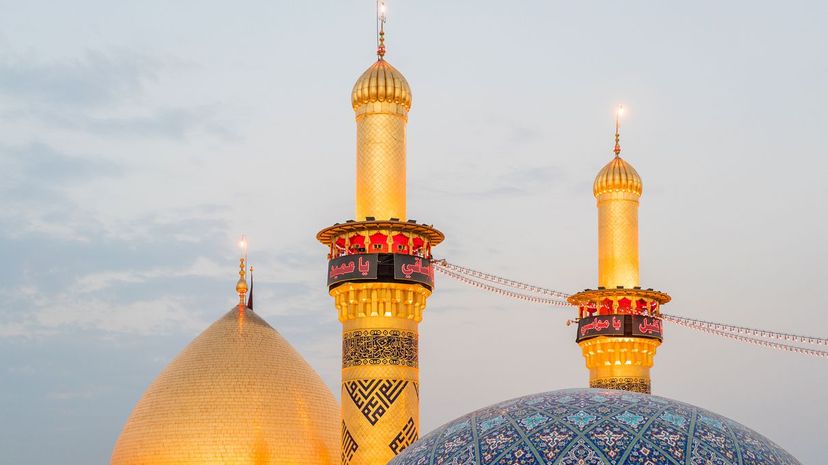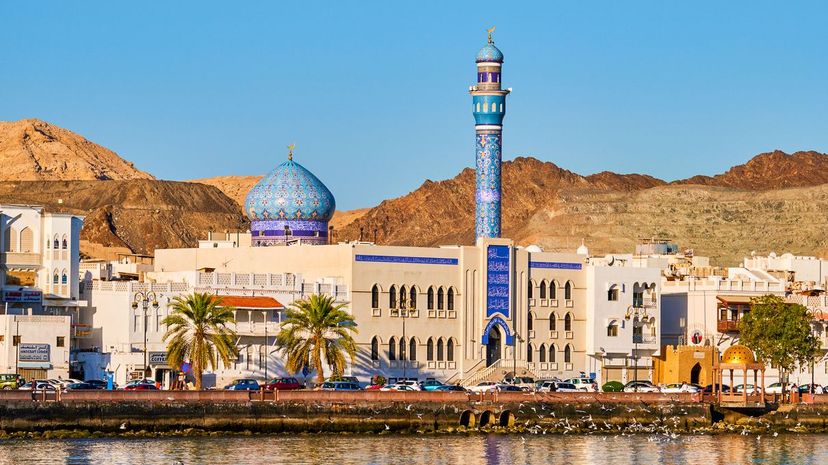
About This Quiz
The Silk Road was more than one single road and even existed at sea. It was a series of trade routes that opened up the lucrative trade in silk and other merchandise of the Eastern World to the Western World. It began as far back as 100 to 200 BC, with precursors like the Royal Road of the Persian Empire dating back even further. Its purpose was to further trade, to make money, and to connect the world and create opportunities in numerous countries - not just for trade but for alliances, for political expansion, for exploitation, for learning, and for pretty much any other reason you could imagine.
Beyond silk, things like gunpowder, spices, tea, technology, philosophy and religion made their way along this legendary road across hundreds of years of progress as empires rose and fell. The Silk Road crossed through more countries than most people think. It wasn't just a straight shot from China to England by any means. There were many stops along the way, and if you know history, then you must know more than a few of those stops. But will that be enough to answer all the questions in this quiz correctly? Take the quiz and head on a journey to see how many you can identify!

Cambodia was part of the Silk Road that went offroad. The maritime route was heavily involved in the spice trade and also in shipping jade from Southeast Asia across the Arabian peninsula and into Africa.

Numerous cities in Afghanistan were major hubs of activity for trade along the Silk Road, including Kabul, Balkh, Herat, Kandahar, and Bamiyan. Because Afghanistan was the center of Central Asia, all roads traveled to and from it, making it integral to the Silk Road's history.

Kathmandu in Nepal was a major stop on the Silk Road thanks to the city's geography which made it a prime agriculture spot. It was thriving, lush and inviting for traders and caravans from all over on the journey to and from China and India.
Advertisement

Tyre, Lebanon, had been conquered by Alexander the Great and ruled by his successors for many years. It prospered for many years as a stop on the Silk Road and was known for making a rich purple dye made from shellfish.

The northern legs of the Silk Road snaked through many parts of Russia. The city of Derbent was a major stop as it's also considered to be the oldest city in all of Russia dating back to the 8th century BC.

Turkey has been an important facet of the Silk Road since before it was even the Silk Road. Izmir, what was once called Smyrna, is located on the Aegean Sea and was where the ancient Royal Road of the Persian Empire came to an end.
Advertisement

Armenia was another major hub of activity along the Silk Road, particularly known for the work of its artisans, including the dyes they produced which were exported both east and west. Marco Polo even remarked on the colorful and luxurious carpets that were produced there.

The silk trade is credited with getting started in a meaningful way under the Han Dynasty in China. The trade routes were of such great importance in China that the Great Wall was built to protect them.

Alexander the Great sought to expand the Greek Empire. His plan was essentially worldwide conquest. He established a city in Central Asia known as Alexandria Eschate that became a hub of Silk Road activity for centuries.
Advertisement

Egypt and China had been trading long before the Silk Road was ever officially established, and there is evidence of Chinese silk in archaeological finds from Ancient Egypt. Once the road was established, however, the ports that the Romans controlled became integral to trade.

Merv was a city in Turkmenistan that eventually became Alexandria and Antiochia. At one point, it was one of the largest cities in the world. During the 12th century it had a population of 500,000. Today it is only a relic of the past.

When Marco Polo visited the city of Tabriz in Azerbaijan, he was impressed by the fine silks that were produced by craftspeople there. In fact, in the late 1200s and into the 1300s, Azerbaijan was one of the wealthiest nations in the region.
Advertisement

The Eurasian Steppe Route, one of the precursors to the Silk Road, was a prominent feature of Kazakhstan, and it's believed horses were first domesticated in this part of the world as well. This region's prominence in the Silk Road faded as time passed and declined considerably from the 8th to 12th centuries.

Osh is the oldest city in Kyrgyzstan and dates back around 3,000 years. It was a major trade destination and a crossroads for travelers and traders from all over, noted especially for the fruit and nuts forests that grew all around.

Sri Lanka was a major port of the Maritime Silk Road and also important in China's attempts to set up a new Maritime Silk Road in modern times. It was essentially a halfway point between China and Egypt along the route.
Advertisement

The Fergana Valley was a robust, verdant and exciting place in Tajikistan that was considered a way point between the East and the West. There was abundant agriculture and commerce here that made it a favored stop for travelers and traders from all over.

During the 6th and 7th centuries, a handful of cities in Uzbekistan became major outposts along the Silk Road which saw them become impressively wealthy as a result. You can still visit Khiva, Bukhara and Samarkand today.

Several cities in Syria thrived along the Silk Road including Aleppo, Palmyra, Raqqa, Tartus, Damascus and others. Thanks in part to the wealth that the country enjoyed from the trade routes, it was a site of frequent disputes among Romans, Assyrians, Armenians and more.
Advertisement

Thailand has long been at the forefront of maritime trade, and there is evidence that the Maritime Silk Road was used to trade gemstones and other products from Thailand to numerous points along the route and up through the Ganges Delta.

Persia, or modern-day Iran, was smack dab in the center of nearly every route along the Silk Road. The result was that numerous cities in the country - from Rey, which is modern day Tehran, Tabriz, Zanjan, Rasht, and many others - all became important stops.

Georgia had a unique position between the East and West that made it a key location along the trade route. The capital city of Tbilisi is still an important point to this day when it comes to dealings that require trade from Europe to Asia and back.
Advertisement

Iraq was a major hub of trade on the Silk Road with key stops in places like Mosul, Fallujah, Baghdad, Erbil and many others. At the time, of course, these were Mesopotamian cities, and much of their wealth came from the weavers who could turn the raw silk into valuable products.

Both Venice and Rome served as major ports for the Maritime Silk Road for obvious reasons. The Roman Empire was essential in establishing the Silk Road and reaped more than its fair share of rewards from the trade that occurred.

Pakistan featured numerous key points on the road, and you can still travel the path of the Silk Road through parts of the country. While several cities served as trade points, the city of Debal, which was near modern-day Karachi, served traders on both land and sea.
Advertisement

Though China is where the Silk Road began, the influence and importance of India can't be overstated. In both the land trade routes and the Maritime route, the spices trade was worth massive amounts of money and lasted for centuries.

Petra in Jordan used to be called Raqmu and earns a unique place of distinction for how it was made. The city is literally carved into the rock, and odds are you've seen it without realizing it as it has appeared in numerous films like "Indiana Jones and the Last Crusade" and "Transformers: Revenge of the Fallen."

Lonja de los Mercaderes means "Silk Exchange" and was a prominent marketplace in Valencia, Spain. This was the end of the line for the silk that made it down the Silk Road into Europe, the final merchant destination where it could be sold to buyers.
Advertisement

The Tea Horse Road, part of the Southern Silk Road, went from China to Tibet by way of Bangladesh. Bricks of tea from China would be taken to Tibet in exchange for Tibetan horses, which is where the clever name is derived.

The Kingdom of Bhutan had a couple of noteworthy spots on the Silk Road, including the cities of Jakar and Paro. Remarkably, despite the country's small size, it has never been colonized by any other nation and has been independent for hundreds of years.

Long before the separation of North and South Korea, Pyongyang, Busan, and Seoul were all points on the Silk Road that had become major points of interest. Remember, it wasn't just silk leaving China; there were many Western goods coming east as well.
Advertisement

Muscat is the capital city of Oman and, as a port city, it was noted for its importance by the Greek geographer Ptolemy as far back in time as the 1st century. On the Silk Road, it was a key location for moving spices from southeast Asia, silks and textiles from China, and wood from India.

Ghengis Khan and his Mongolian army took control of much of the northern Silk Road, but there was no way he could manage to control all routes. Thus his plan was to control the north and destroy as much of the south as possible.

The city of Nara in Japan is about as far east as the Silk Road was able to go. Many of goods brought in from as near as Korea and China and as far away as the Middle East and the Roman Empire became incorporated into Japanese art during the Asuka period, from 538 to 710 AD.
Advertisement

During the Tang Dynasty in China, the Silk Road was closed and rendered unusable when Tibetans took it over, cutting off trade to China. It was reopened 21 years later under the rule of Empress Wu.

Several ports in Indonesia played a key role in the Silk Road's history, but Srivijaya - located on the island of Sumatra in Indonesia - had one of the most significant roles in trading in not goods but knowledge. As a center of Buddhism, much of the religion's expansion began in Srivijaya.